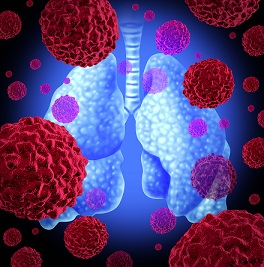European nano-warriors tackle a big killer ... cancer

date: 24/01/2014
Project: Nanotechnological toolkits for multi-mod...
acronym: NAMDIATREAM
See also: Info-centre
Contact: http://www.namdiatream.eu/joomla/
Nanotechnology, which delves into the science of miniaturisation, has a galvanising quality, bringing together scientists from different disciplines to achieve common goals. In this case, teams from the fields of biology, physics, genetics, engineering, clinical medicine, biochemistry, immunology and even law, economics and ethics have joined forces to tackle a major scourge.
Imagine, with just a tiny sample (blood, serum, etc.) dropped into a card-sized reader (a veritable lab-on-a-chip) a health expert could quickly pick up the tell-tale signs of cancer cells.
The plan of the EU-funded consortium Nanotechnological toolkits for multi-modal disease diagnostics and treatment monitoring (Namdiatream) was not to cure cancer, per se, but to boost the sensitivity of diagnostics and the ability to monitor progress during treatment. They focused on three types – breast, prostate and lung cancer.
Each year, there are 3.2 million cancer cases reported in Europe, and more than 1.7 million cancer-related deaths. The prototype devices being developed during the four-year project will detect common cancer cells much earlier and, with timely treatment, improve the chances of recovery.
According to the project leader, Professor Yuri Volkov of Trinity College Dublin’s School of Medicine, the portable nanodevices are based on innovative lab-on-a-chip, -bead and -wire technologies applicable in different settings – clinical, research, or point of care (i.e. hospitals). These lab-on-x technologies exploit the photo-luminescent (‘glow-in-the-dark’ light emitting), plasmonic (‘light-on-a-wire’), magnetic and unique optical properties of nanomaterials.
Joint strengths
This is ground-breaking work made possible thanks to advanced technology but also to EU funding for cross-border investigations. Teams across Europe were doing related but fragmented research, suggests Prof. Volkov. This risked leaving a team dangling if their approach failed or lacked funding.
“So we integrated our research and identified joint strengths to help one another develop the best technological approaches in case something didn’t work in one, or synergies were identified, thereby increasing the chances of wider success.”
At its half-way stage, notes Prof. Volkov, Namdiatream underwent a natural evolution when it became clear that by merging and refocusing work in some areas – i.e. in fluorescent nanomaterial technology and magnetic nanowire barcodes – it would speed up industrial implementation efforts.
“Now, work on the preclinical prototype devices is well under way,” he confirms. But one of the many remaining challenges is to calibrate their sensitivity, so that they do not give false readings, for instance.
Industrial partners Nikon and BD (a global medical technology company) are building innovative cellular and molecular imaging technologies to deal with this and other aspects of novel nanotools.
The complementary lab-on-a-wire technology works like a supermarket barcode label which has been shrunk to nano-proportions (a mini-carrier wire), yet still capable of accurately conveying vital medical information that can be read by small magnetic sensors.
Dr Adriele Prina-Mello, a bioengineer and nanomaterials expert with the project, says the success of big multi-disciplinary efforts like Namdiatream goes beyond finance and technology. It is also linked to the vision and ability of the coordinator and team to deliver the technology through the pipeline to market.
“You can be scientifically sound and not grasp opportunities that this integrated knowledge offers to translate significant breakthroughs into innovative industrial applications,” he concludes.
Editor’s note: by design, the consortium includes academics concentrating on scientific questions, SMEs offering clinical support, and large companies helping to deliver R&D to market so that the resulting nanodevices can benefit stakeholders and patients much sooner. Participating in the project has also led to bilateral benefits for several partners, including leadership awards, follow-up grants, patents filed, contracts won, venture capital secured, and market growth.
Related artcile: Nano-tech sensors to find cancer earlier
